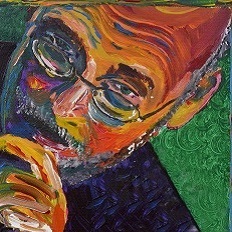A joint approach
A case study helps explain how to differentiate gout from pseudogout.
An 80-year-old man is admitted to your service with severe right knee pain that has progressively worsened since a recent admission with pneumonia. His medical comorbidities include hypertension, hyperlipidemia, obesity, and smoking. On exam, his right knee is exquisitely tender on palpation, red, and swollen.
Of the following choices, which one will be the most helpful in definitively establishing the diagnosis?
A. Polarized microscopy
B. Inflammatory marker testing (erythrocyte sedimentation rate and C-reactive protein)
C. Point-of-care ultrasound (POCUS)
D. Knee MRI

Given the patient's presentation, a variety of conditions come to mind in the differential diagnosis. A septic joint is certainly the most worrisome one, but gout is also a likely affliction, especially given the patient's comorbidities. However, a similar condition is often overlooked: pseudogout. Pseudogout falls under the umbrella of calcium pyrophosphate (CPP) deposition diseases. The term arose from patients who developed a gout-like presentation but had synovial fluid crystals that did not respond to traditional uric acid-lowering agents.
Though the clinical presentation of pseudogout can be identical to gout (warmth, erythema, edema, and pain in and around joints), the joints involved may narrow the diagnosis to pseudogout. It involves the knee most commonly (over 50% of cases), followed by the wrist. Unlike gout, it rarely involves the first metatarsophalangeal joint. Moreover, the timeline of disease is unique in pseudogout—patients may be affected for weeks to months at a time, whereas those with gout experience much shorter attacks. (See Table for more comparisons of the two conditions.)
Table. Gout versus pseudogout
| Characteristic | Gout | Pseudogout |
| Crystal shape | Thinner, needle-like | Thicker, rhomboid |
| Crystal composition | Uric acid | Calcium pyrophosphate |
| Birefringence | Negative | Weakly positive |
| Radiographic elements | “Rat-bite” erosions | Lines or rims of calcium in the cartilage |
It is estimated that about 4% to 7% of the adult population in the United States is affected by pseudogout. The underlying pathogenesis of the disease is not fully elucidated, but it has been demonstrated that CPP crystal formation in the cartilage matrix is an important catalyst for disease progression. Typically, a major stressor such as trauma, surgery (particularly parathyroidectomy), or severe medical illness triggers acute attacks. Diagnostic evaluation includes imaging with conventional radiographs to identify evidence of cartilage calcification, a hallmark of pseudogout given the radiopacity of the calcium-containing crystals, and arthrocentesis with synovial fluid evaluation. Unlike gout, which involves uric acid crystals, pseudogout is characterized by CPP crystals, which are rhomboid-shaped and have weakly positive birefringence on polarized microscopy.
Thus, the correct answer to the question is A. Polarized microscopy. Inflammatory markers are commonly elevated in pseudogout patients, but they are not specific, as they can be elevated in any inflammatory disease. A knee MRI with soft-tissue assessment is unnecessary, as a simple radiograph can identify the characteristic calcifications associated with pseudogout. Of interest, there have been studies focusing on POCUS and its role in evaluating pseudogout, and a pseudo-double contour sign can be seen (arising from CPP crystals depositing in the matrix). However, gout may also reveal a double contour sign with uric acid crystal deposition, and as a result it may be difficult to distinguish between pseudogout and gout on POCUS.
Once the diagnosis has been established, there are a variety of ways to treat pseudogout. The preferred treatment modality for patients with one or two affected joints is local administration of anti-inflammatory medication, such as intra-articular injection of glucocorticoids, if septic arthritis has been ruled out. This should be performed with joint aspiration. If more than two joints are involved or if the joints are not amenable to injection, systemic anti-inflammatory drugs are the mainstay of treatment. This includes NSAIDs, colchicine, or glucocorticoids (typically reserved for patients who cannot tolerate NSAIDs or colchicine given their adverse effects).
The patient successfully underwent arthrocentesis, and septic arthritis was excluded. Polarized microscopy demonstrated positively birefringent rhomboid crystals. Additionally, a right-knee radiograph was performed, which showed a rim of cartilage calcification. Pseudogout was diagnosed, and the patient improved rapidly with thorough joint aspiration and intra-articular glucocorticoid injection.



